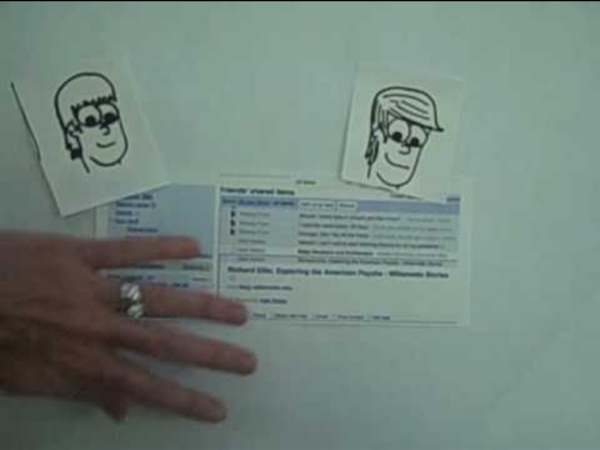



http://www.youtube.com/watch?v=XwM4ieFOotA
Related: Week 2: Connected Learning, PLNs! (*=Key reading) • Support Readings • krowanEducational Hash Tags #edude#eduFollowChallenge#edugreen #eduhashtag #eduit#edumindset#eduON (Ontario)#euduoz #edupd#edupreneur#edupunk #edutech #EduThingsILike#eduvc#eduvoxers #elemchat #elementary#elemsci #ell #ellchat#elrnchat #elt#eltchat#eltpics#emchat #emotionalliteracy#edpolitics #engagechat#engchat #engedu #EngineeringEducation#english #english-teacher#engsschat #enrichingkids#enviroed#e-safety#ESCchat#esdgc#esea#esl #esol#esp#ETAS#etcchat#ETcoaches#etmchat#ettipad #e20#expandedlearning #family#fb4ed#FCE#FETC #FF#fft#filmclass#finnedchat#fitnessedu#flatclass #flatclassroom#FLE#flipchat #flipclass#flipped#flippedclassroomflippedlearning#flteach #followalibrarian #followfriday#fooded#foodtechteachers #formativeassessment#forteachers #frenchchat#frimm#fstenet#FutureReady#FYCchat #hacklearning#health #healthed#hemkting#highered#higheredchat #highschool #highscope #hiphoped#histedchat#history#historyteacher#historyteaching#homeschool#homeschoolers#homeschooling #HourofCode #hs #hsc#hsmath#htagcommoncore
15 librarians to follow on Instagram It’s no secret that school librarians and libraries play a critical role in today’s schools and have a positive impact on student learning (don’t miss the School Libraries Work! research compendium to learn more about the importance of school libraries). This year, we had the privilege of meeting some impressive library professionals, including the winners of the 2017 School Library Journal School Librarian of the Year Awards. These five librarians continuously collaborate with teachers, families, and their communities to inspire and engage students—whether through makerspaces, book clubs, project-based learning, City Hall field trips, and more. Looking ahead to the New Year, we’ve rounded up a list of “15 librarians to follow on Instagram” that is sure to help any educator find some serious inspiration.
*Examine What Makes a Literacy in the May/June Issue A few years ago, at an ALA Annual Conference, I found myself experiencing a very peculiar day. Besides my standard sessions on information literacy, I attended sessions on civic literacy and news literacy, as well. There were conversations in hallways about digital literacy, but also about disciplinary literacy and financial literacy. elearnspace. Connectivism: A Learning Theory for the Digital Age Connectivism: A Learning Theory for the Digital Age December 12, 2004 George Siemens Update (April 5, 2005): I've added a website to explore this concept at www.connectivism.ca Introduction Why Every Leader Needs a PLN The concept of a Personal Learning Network (PLN) has been around for a couple of years now. Educators who have embraced this concept have experienced firsthand the positive impact on professional practice that being a connected educator brings. The premise is relatively simple.
20 Creative Bloom's Taxonomy Infographics Everybody Loves Using There is no shortage of Bloom’s Taxonomy infographics online for every teacher. From our own Bloom’s Verbs poster to the resources that can be found on Andrew Churches’ Edorigami, there’s a taxonomy tool for every purpose. (Andrew also created a very helpful chart for checking your lesson components against Bloom’s Digital Taxonomy—you can get it here.) We’ve got some favorites of our own, too. So we decided to do some digging for some of the best Bloom’s Taxonomy infographics out there, and bring 20 of them to you in this post.
What Does Connectivism Mean for Education? The theory of Connectivism provides new insight into what it means to facilitate learning in the 21st Century. Those responsible for teaching and training need to incorporate instructional strategies that match learner expectations and the physical changes that technology has wrought on the human brain. This is an ongoing challenge and one that does not have a single right answer or pre-packaged solution. The application of Connectivism to teaching and learning requires a thorough rethinking of the educational process and the role of the teacher, student, and technology in that process. Siemens has done a good job laying out the core principles of Connectivism in his 2004 piece, "Connectivism: A Learning Theory for the Digital Age." His list is as follows:
What Is A Personal Learning Network? What Is A Personal Learning Network? by TeachThought Staff What is a personal learning network, or rather a Personal Learning Network? How about a Professional Learning Network? In the video below, Marc-André Lalande offers a concise, useful definition that simplifies the idea from hashtags and movements and social engagement and badges and, well, all the buzzwords you hear, into a clear explanation that works not just within education, but any field. “A Personal Learning Network is a way of describing the group of people that you connect with to learn their ideas, their questions, their reflections, and their references.
Center for Global Education (Please scan document) By Anthony Jackson In matters of national security, environmental sustainability, and economic development, what we do as a nation and in our everyday lives is inextricably intertwined with what governments, businesses, and individuals do beyond our borders. This new reality helps us more clearly define the role that education must play in preparing all students for success in an interconnected world. The United States have invested unprecedented resources in education, betting that our outmoded, factory-age system can be fundamentally transformed to prepare students for the rigors of a global economy.
Why Connected Learning? - Connected Learning Alliance Connected learning is when someone is pursuing a personal interest with the support of peers, mentors and caring adults, and in ways that open up opportunities for them. It is a fundamentally different mode of learning than education centered on fixed subjects, one-to-many instruction, and standardized testing. The research is clear. Young people learn best when actively engaged, creating, and solving problems they care about, and supported by peers who appreciate and recognize their accomplishments. Connected learning applies the best of the learning sciences to cutting-edge technologies in a networked world.